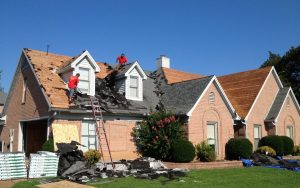Data My Roof Truss Manufacturer May Require When Designing My Roof

At some point either as contractor or home owner, you may need to order roof trusses. Whether the roof is for a simple wooden shed or a complex hipped attic extension, it is helpful to know what information the truss designer may need.
It is most likely your build will have proceeded from an architect’s drawings and much of the detail you require will be specified there. In more complex cases there maybe engineers specifications as well, giving details such as wind bracing and specifying loadings.
Discussion of the various types of roof structure is beyond the scope of this article and will hopefully be covered in further publications. However, as part of the design process and through discussions with your architect, you will have resolved issues such as:
- Hipped or gabled roof design
- Vaulted or flat ceilings
- Utilizing the loft space as living accommodation (room-in-the-roof)
Whilst by no means exhaustive, this article explains some of the terminology you may encounter. It outlines some of the ideas you may need to think about in advance of your meeting with your truss designer.
- Brief anatomy of a roof truss
You can think of a simple common roof truss as a triangle; with two top chords (rafters) of the same pitch meeting at an apex and connected at their base by a bottom chord (ceiling tie). This ‘close couple system’ is the basic shape from which most roof truss designs develop.
Within the truss, connecting the rafters and ceiling tie together, are a number of webs. These webs form triangular patterns which help distribute the forces within the truss (triangulation of forces). The most common form of roof truss used for dwellings is the fink roof truss, recognizable by the distinctive w-shape formed by its webs.
- What is the overall span of the roof truss?
Measured in millimeters, the overall span of a roof truss is considered to be the span over the wall plates. It is defined as the distance between the outside edges of the two supporting wall plates. These usually coincide with the setting out point of the truss, where the undersides of the rafter and ceiling tie meet. In most cases therefore, the overall span is also the length of the ceiling tie.
- What is the height/pitch of the truss?
The pitch of a roof truss is the angle formed by the rafters to the horizontal and is measured in degrees. Mono pitch trusses have just one rafter and therefore one pitch to consider (think of a right angle triangle). Common trusses such as the fink roof truss are dual pitch, usually having the same pitch on either side.
There are circumstances where you might need a dual pitch truss with different angles, either as a nuance of design or where you are matching in to an existing roofline.
If you are unable to provide a roof pitch, the truss designer can use the truss height. The height of a roof truss is defined as the vertical measurement from the apex (upper most point of the truss) to the bottom of the ceiling tie.
If you remember your high school math, you might see the relationship between the pitch and the vertical height.
- What is the roof truss spacing?
In the United Kingdom roof trusses are traditionally spaced at 400 or 600 millimeter centres. These measurements work nicely with those of popular wall finish boards and panels, being 2400 by 1200 millimeters.
600 millimeter has become a popular roof truss spacing for timber frame buildings. This does mean less roof trusses are required and represent a significant saving. However, the trusses can require slightly larger timber sections and bigger nail plates. There is also a potential for deflection in battens supporting heavier roof coverings such as natural slates, which may become evident.
When using a roof finish such as box-profile or lightweight sheeting, rafter spacing may be increased following the manufactures specifications.
- What are the overhang, eaves and fascia detail?
The overhang is the extension of a rafter (or ceiling tie) beyond its support or bearing (wallplate). The eave is area after the point at which the overhanging rafter passes the external face of building. In many cases this will be an external skin and not the same as the truss bearing wall.
The overhang and eave line provide the width for the soffit; the board fixed underneath the eaves to conceal the timbers.
The fascia board is a horizontal board fitted along the length of the building and fixed to the end of the truss overhangs. The fascia itself is usually made from a plastic derivative, fixed against deteriorating in the sun.
- What is the function of the roof?
The obvious answer is that the roof provides the framework supporting the roof finish, protecting for the building. However, roof trusses do much more than this and provide a number of other functions you may need to consider, including:
- Architectural aesthetic
- Integral functions (support for the internal ceiling finishes etc)
- Support for services (water tanks etc)
- Support for insulation, alternative energy
- Access for maintenance
- Storage
- Room-in-the-roof
All of these represent separate articles in their own right. However, it is worth briefly mentioning the notion of storage in loft space or attic rooms. You must consider carefully the amount of material you are accumulating in your roof space. If you are likely to have any special storage needs you must mention these to your truss designer.
- What is the loading on the roof truss?
As well as potential storage within the loft space, the truss designer also has to consider a number of other loading factors. These include:
- tile or slate loads
- The building location
- Wind load
- Snow load
- Ceiling loads
- Ceiling finishes
- Water tank loads
- Storage
- Attic trusses
- Floor loads
- Internal finishes
- Storage
- Internal or external openings
Most of these loads are factored in by the truss design software during the design process. When you provide your location the wind and snow loads can be automatically attributed. You may still need to provide some information, a good example being the type of roof tile type you are going to use.
- Are there any internal load bearing walls?
The design of the building or the foundation footprint, will define the location of the external load bearing walls and thus the bearing points for the roof trusses. For certain truss types, particularly attic trusses and hip ends, the position of any internal load bearing walls can be influential. Very often this extra support can reduce rafter and ceiling tie sizes and make difficult openings or spans possible.
- Where are there an internal openings?
Access to the roof space is vital, at the very least a loft hatch will be required for maintenance. There are a number of other internal access factors that may need to be considered. In the case of room-in-the-roof, a staircase will be required to bring the attic rooms into frequent use.
If the staircase is run at right angles to the attic trusses, a much larger and potentially more expensive trimmed opening will be required. Trimmed openings require more trusses. At the very least doubling up on either side of the opening (to form girders) and the provision of supporting timbers.
If access is required through from one roof space to another, perhaps where a roof turns through 90 degrees, then a walk-through will be required (another trimmed opening).
- Are there an external openings?
There are a number of different types of external openings, those which break through the roof line. With the exception of the narrowest roof lights and chimneys, which may squeeze between trusses at 600 millimetre centres, all openings will girders and trimming.
- Roof lights
- Dormer windows
- Picture windows
- Chimney stacks
- Do you require treated roof trusses?
In the United Kingdom is not obligatory to have roof truss timber treated for new buildings. As it is relatively inexpensive and your roof represents a large investment, you might consider it a worthwhile preventative step. Where the trusses are destined for old buildings and restoration work, it is almost certainly a good idea.
- Delivery of your roof trusses?
Roof trusses can be extremely long and bulky with deliveries containing a large amount of materials. You need to make sure that the roof truss manufacturer’s delivery lorry can gain access to your site. If access is not possible you need to make sure you have handling facilities in place to move the trusses from an accessible delivery point to your site.
On site you need to make sure you have storage space for the truss delivery. You may also need to consider lifting the trusses into place, either with a crane or telescopic lift.
For more information on the design and manufacture of all types of roof trusses and fink roof truss variations then take a look at our blog and supporting web pages at melingoed.
